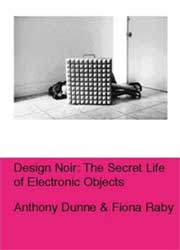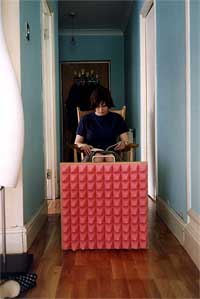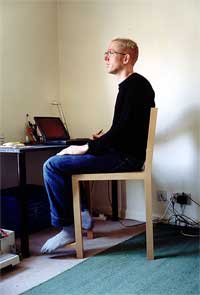 Design Noir: The Secret Life of Electronic Objects by Fiona Raby and Anthony Dunne (UK – USA)
Design Noir: The Secret Life of Electronic Objects by Fiona Raby and Anthony Dunne (UK – USA)
Editors’ blurb: Dunne and Raby investigate the real physical and cultural effects of the digital domain, demonstrating that mobile phones, computers and other electronic objects such as televisions profoundly influence people’s experience of their environment. Dunne and Raby’s ideas have important implications for architecture and design. In this, their first major book, they introduce their extraordinary new way of thinking about objects, space and behaviour to a broad audience.
This book was my favourite read in 2005 (ex-aequo with Carol Vorderman’s Detox for Life method.) I bought it because i was sick of people giving me that shocked look after i’d told them that no, actually i had never heard about Design Noir. Now i’m the one who urge people to read it. Demonstration:
Books about technology date very fast. It’s often a matter of months but it’s not going to happen soon to Design Noir. Although it was first published in 2001, the book keeps all its relevance. Besides, it is fun. Brainy, challenging but fun.
The authors demonstrate that consumer gadgets come with unsuspected “accessories”. In particular the electromagnetic forces which influence certain aspects of our daily life. They are everywhere but they are invisible and we are not aware of them most of the time, although traces of their existence are all around us: people who suffer from an hyper-sensitivity to electromagnetic waves, telco equipments hidden in church spires, etc. Interacting with consumer electronic products can also bring about quirky, and yes, “noir” (as in the film noir genre) narratives that challenge the conformity of our everyday life and don’t correspond to the glossy, clean and perfect co-existence with gadgets that manufacturers promise we’ll enjoy if we buy their mobile phones, GPS gadgets or radios.
The noir products Raby & Dunne imagine would be conceptual products, a medium that fuses complex narratives with everyday life.

 The Electro-draught Excluder and the Nipple Chair
The Electro-draught Excluder and the Nipple Chair
The last part of the book is dedicated to Dunne & Raby’s Placebo project. The designers created eight pieces of furniture and asked people to adopt and bring them home. Each object was designed in the hope that it would elicit stories about the secret life of electronic objects and make their users think about the impact of technology in their lives. There is a “parasite light” that only works when placed near an electronic product, a table to store your mobile phone that softly glows when a call is received, a “GPS Table” that warns that it is “Lost” when it is out of range of a satellite, an electro-draught excluder that pretends to absorb radiations and the “Nipple Chair”, which buzzes and vibrates when detecting an electromagnetic field.
Other projects discovered throught that book: The Digital Shelter Kit by Pedro Sepulveda-Sandoval and Noam Toran‘s Objects for Lonely Men.
Raby and Dunne were interviewed by Alex Wiltshire for ICON magazine.
Photographs by Jason Evans.
